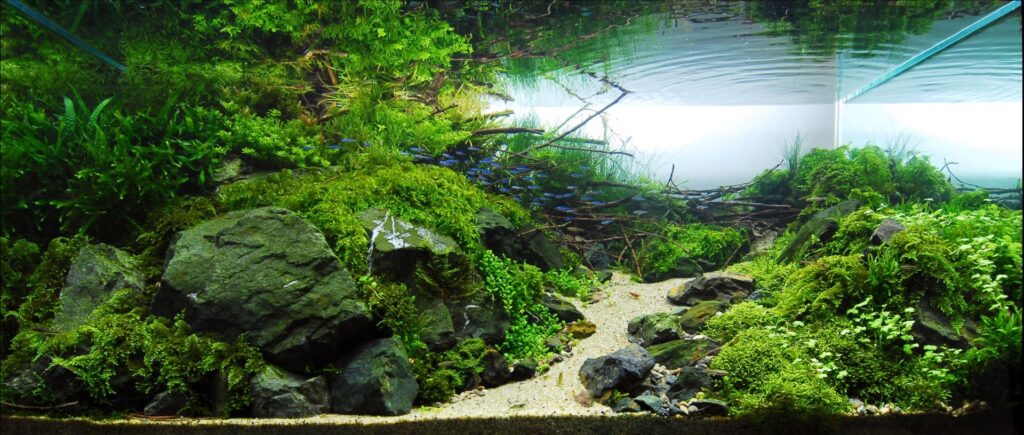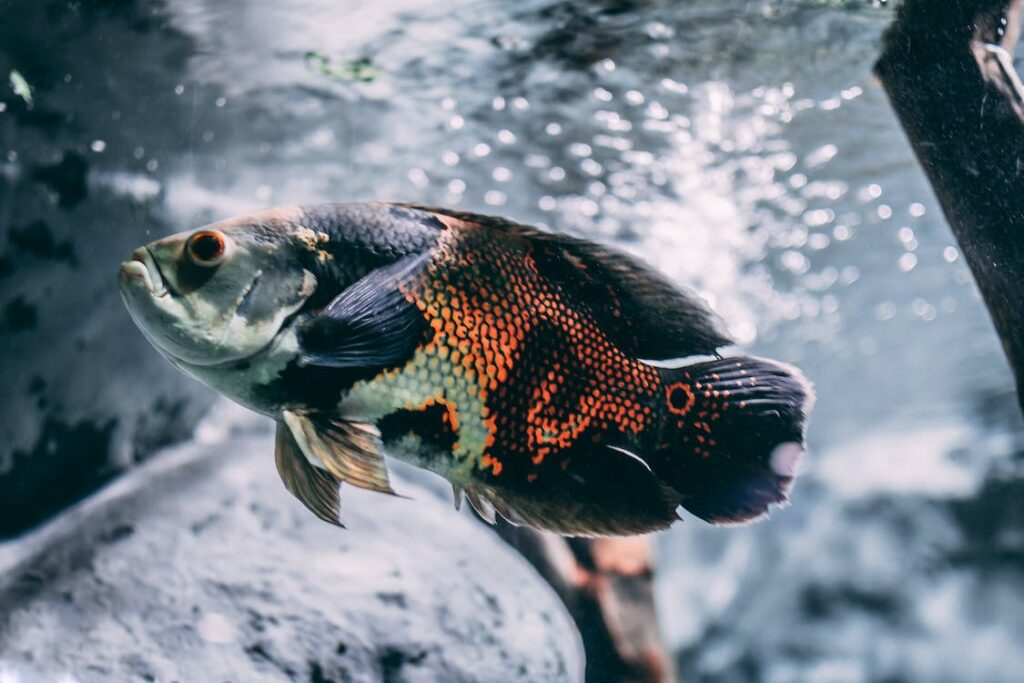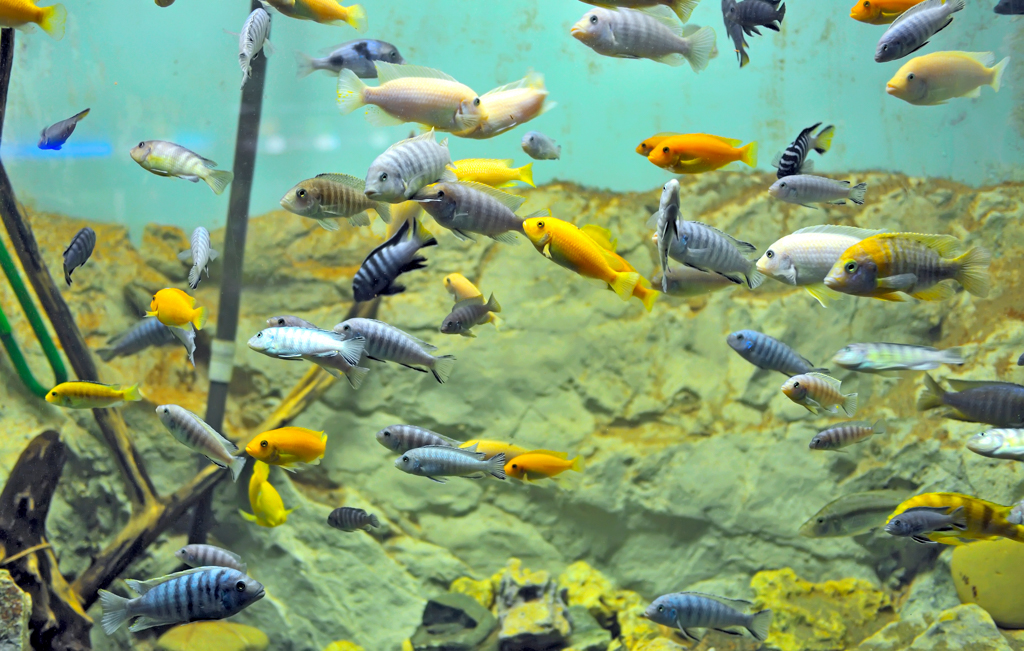Aquariums are beautiful and relaxing additions to any home or office, providing a glimpse into an underwater world that is otherwise inaccessible to most people. However, while the fish and other creatures inside the aquarium are undoubtedly the main attraction, the aquarium background also plays an important role in creating a natural and appealing environment for them.
In this article, we’ll take a closer look at aquarium backgrounds, including their purpose, types, and how they can impact the behavior of fish.
Purpose of Aquarium Backgrounds
The primary purpose of an aquarium background is to enhance the visual appeal of the aquarium and create a natural-looking environment for the fish and other creatures inside. In the wild, fish are surrounded by natural backgrounds, such as rocks, plants, and sand, which not only provide them with shelter and hiding places but also play a role in regulating water quality and light levels.
In an aquarium, a background can serve many of the same functions, creating a sense of security and privacy for the fish and helping to mimic the natural environment in which they would typically live. Additionally, a background can help to hide unsightly equipment, such as filters and heaters, and create a more aesthetically pleasing appearance overall.
Types of Aquarium Backgrounds
There are many different types of aquarium backgrounds to choose from, each with its own unique advantages and disadvantages. Some of the most common types include:
- Solid Color Backgrounds: These backgrounds are typically made of vinyl or paper and are available in a wide range of colors. They are affordable and easy to install, but they don’t provide any visual interest or texture.
- Gravel or Sand Backgrounds: These backgrounds are created by using a layer of gravel or sand on the back of the aquarium. They can help to regulate water quality and create a natural-looking environment, but they can be difficult to clean and may require frequent maintenance.
- 3D Aquarium Backgrounds: These backgrounds are made of molded plastic or resin and are designed to mimic natural rock formations, caves, and other underwater structures. They can provide a more realistic and visually interesting environment for fish, but they are typically more expensive and may require additional support.
- Live Plant Backgrounds: These backgrounds are created by attaching live plants to the back of the aquarium. They can help to regulate water quality, provide natural hiding places for fish, and create a beautiful and natural-looking environment. However, they can be difficult to maintain and may require additional lighting and nutrient supplementation.
Impact of Aquarium Backgrounds on Fish Behavior
While the impact of aquarium backgrounds on fish behavior may be relatively small, they can still play a significant role in creating a comfortable and natural environment for fish. Some of the ways in which aquarium backgrounds can impact fish behavior include:
- Creating a sense of security: Fish are naturally skittish creatures, and a well-designed aquarium background can help to create a sense of security and privacy for them. A background that mimics the natural environment of a particular species of fish can help them feel more at home and encourage them to display natural behaviors like swimming, hiding, and exploring.
- Regulating light levels: Some fish are more sensitive to changes in light and color than others, and an aquarium background can help to regulate these factors. For example, a dark background can help to reduce glare and create a more comfortable environment for fish that are sensitive to bright light.
- Reducing stress: Fish can become stressed in an unfamiliar or uncomfortable environment, which can lead to health problems and decreased lifespan. By providing a suitable background, you can create a more natural and comfortable environment for your fish, which may help them to thrive and display their natural behaviors.
- Providing natural hiding places: Many species of fish need hiding places to feel safe and secure. An aquarium background that includes natural-looking structures like caves, rocks, and plants can provide these essential hiding places for fish. This can encourage fish to explore and interact with their environment, promoting natural behaviors and reducing stress.
- Creating a sense of depth: A well-designed aquarium background can create a sense of depth and dimensionality, making the aquarium look more natural and appealing. This can help to enhance the overall visual appeal of the aquarium and create a more immersive experience for the viewer.
- Mimicking natural habitats: Some species of fish have very specific habitat requirements, such as water temperature, pH level, and lighting conditions. By creating an aquarium background that mimics their natural habitat, you can provide a more comfortable and suitable environment for these fish. This can encourage them to display natural behaviors and thrive in captivity.
Conclusion
In conclusion, aquarium backgrounds play an important role in creating a natural and comfortable environment for fish. They can provide essential hiding places, regulate light levels, reduce stress, and create a sense of depth and dimensionality. While the impact of aquarium backgrounds on fish behavior may be relatively small, they are an essential component of any well-designed aquarium. When choosing an aquarium background, it’s important to consider the specific needs and preferences of your fish species, as well as the overall aesthetic of your aquarium. With the right background, you can create a beautiful and natural-looking underwater world that your fish will love to call home.
![]()




